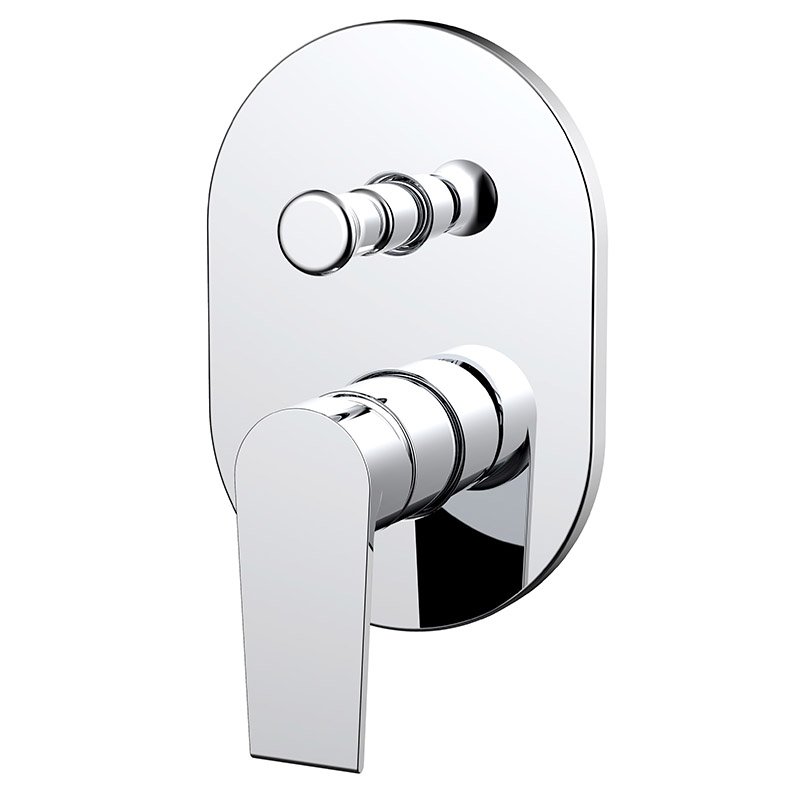How To Choose A Shower Mixer Valve
Choosing the right shower mixer valve is one of the most critical steps in designing or upgrading a bathroom. The mixer valve determines how effectively water temperature and pressure are balanced, directly influencing user comfort and safety. A well-chosen valve not only enhances performance but also ensures long-term reliability and ease of maintenance, especially for commercial and residential projects.
1. Understand the Main Types of Shower Mixer Valves
Each mixer valve type serves a specific function. Knowing their differences helps you select the best one for your installation.
| Type | Description | Advantages | Ideal Use |
|---|---|---|---|
| Manual Mixer Valve | Combines hot and cold water manually through a single handle or two separate knobs. | Simple, affordable, easy to install. | Small residential bathrooms or renovations. |
| Pressure-Balancing Valve | Automatically maintains water temperature when water pressure fluctuates. | Prevents scalding, safe for families. | Residential projects with variable water pressure. |
| Thermostatic Mixer Valve | Keeps a consistent temperature regardless of water supply changes. | High precision, energy-efficient, safe for children and elderly. | Hotels, premium homes, commercial buildings. |
| Diverter or Transfer Valve | Controls water flow between multiple outlets such as an overhead shower, hand shower, or bathtub spout. | Offers multi-functional shower experience. | Luxury bathrooms or multifunctional setups. |
Tip: For multi-outlet systems, choose a thermostatic or diverter valve to maintain stable performance across all outlets.
2. Evaluate Performance and Installation Requirements
When choosing a shower mixer valve, it’s crucial to evaluate technical specifications to match your building’s plumbing system.
Key Factors to Consider
Water Pressure:
Check the operating pressure range (commonly 0.2–0.8 MPa). Low pressure may require a valve with built-in pressure compensation.Flow Rate:
Select a valve that ensures sufficient flow for all connected outlets. High-flow valves are ideal for rain showers or dual shower heads.Temperature Control:
Thermostatic valves allow you to pre-set temperatures (commonly around 38 °C) to prevent scalding and maintain consistency.Material Durability:
Look for valves made of solid brass or stainless steel, which resist corrosion and last longer than plastic alternatives.Compatibility with Trim Kits:
The rough-in valve must match the visible shower trim (faceplate, handle, knobs) for both functional and design consistency.Maintenance Accessibility:
Choose a valve that allows easy cartridge replacement without removing tiles or cutting into the wall.
3. Match the Valve to Your Project Type
Different applications demand different valve solutions. Selecting the right model can save maintenance costs and improve user experience.
| Project Type | Recommended Valve | Why It Fits |
|---|---|---|
| Standard Residential Bathroom | Pressure-Balancing Valve | Ensures temperature stability and safety at a reasonable cost. |
| High-End Residential or Hotel Project | Thermostatic Valve | Provides luxurious control and long-term durability. |
| Commercial Facilities (e.g., gyms, spas) | Thermostatic or Sensor-Controlled Valve | Handles high usage and consistent performance. |
| Multi-Outlet or Spa Showers | Diverter or Transfer Valve | Supports multiple shower functions efficiently. |
For large-scale B2B installations, ensure that your chosen valve meets ISO9001 or WRAS standards for safety and reliability.
4. Practical Buying Tips
Confirm the Rough-In Size:
Verify that the valve body fits your wall cavity and plumbing connections before installation.Select Corrosion-Resistant Finishes:
Chrome and brushed nickel finishes are common, but PVD-coated stainless steel offers superior resistance in humid environments.Opt for Replaceable Cartridges:
Cartridges are the heart of a mixer valve. Choose models that use standardized ceramic cartridges for easy future maintenance.Check Certification Marks:
Look for valves that comply with CUPC, EN817, or ISO9001 to ensure quality assurance.Think Long-Term:
A high-quality valve may cost more initially but will save on water bills, maintenance time, and replacement costs over years of use.
Summary
Selecting the ideal shower mixer valve involves balancing functionality, design, and durability. Start by understanding the main types — manual, pressure-balancing, thermostatic, and diverter — then assess the water system’s pressure, installation conditions, and the project’s usage scenario. A thermostatic valve is the best choice for high-end and safety-conscious installations, while pressure-balancing valves offer cost-effective reliability for standard homes.
At DELICA Sanitary Ware, we combine over 30 years of production experience with cutting-edge technology to create high-quality mixer valves that blend art, performance, and safety. Our products meet ISO9001:2015, EN817, and CUPC certifications, ensuring consistency and dependability for global B2B clients. Each DELICA shower mixer valve is engineered to deliver precise temperature control, smooth operation, and timeless aesthetics — the perfect balance between innovation and everyday comfort.

